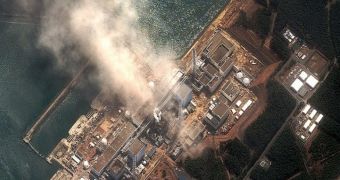Over the past three days, three explosions rocked the reactors of the Fukushima Daiichi nuclear power plant in Japan. The facility was heavily affected by the 9.0-magnitude earthquake that struck off the nation's shorelines on March 11. Three reactors at the plant are now going into meltdown.
Japanese officials and the International Atomic Energy Agency (IAEA) confirm that fuel rods inside reactors #1, #2 and #3 are now melting, due to lack of cooling. The cooling pumps that were supposed to pump seawater inside the reactors have stopped functioning.
Initially, only reactor #1 had been affected by the tremor and ensuing tsunami, but reactor #3 was also damaged yesterday. Today, March 15, reactor #2 was damaged by an explosion as well. The nuclear power plant is located 250 kilometers (155 miles ) away from the capital Tokyo.
Having already evacuated between 170,000 and 200,000 people in the surrounding areas, the Japanese authorities in charge of managing the crisis are now extending the evacuation area considerably.
According to reports, radiation levels recorded today near Fukushima I were 8 times above normal in the area surrounding the plant, and some 1,000 times higher than normal overall. If any of the three reactors crack open, then the region could face significant consequences.
Large amounts of radioactive elements such as iodine-131 and plutonium would be released into the air and water, and this would contribute to causing significant public health concerns in the population.
Already, operators of the power plant's cooling systems have vented pressure from the reactors directly into the atmosphere, even if the vapors were radioactive. The measure was taken to prevent pressure build-up inside the reactor chamber.
“The fact they’re having trouble cooling the reactors is going to trigger an emergency,” explains the Texas Tech University director for the Center of Environmental Radiation Studies, Ron Chesser.
“There are certain trigger points for declaring an emergency at nuclear reactors. Reduction in cooling capacity would be one of those. Release of radiation would be another,” the expert goes on to say.
“Reactors are not like your car that you can turn off and walk away. They’re going to continue generating a great amount of heat until the core is disassembled,” adds the scientist, who is the first American to have visited Chernobyl following the 1986 disaster, back in 1992.
“Without cooling water, then you stand a real chance of a meltdown of core that could result in a large release of radiation, potentially,” the expert argues. He adds that Japanese constructors plan for more earthquakes than usual when they build these power plants.
“I think that a reactor meltdown could be a major disaster, especially in a highly populated country such as Japan. It would be a real setback when we are battling to find alternatives to fossil fuels considering the potential that nuclear energy has,” Chesser explains, quoted by Daily Galaxy.

 14 DAY TRIAL //
14 DAY TRIAL //